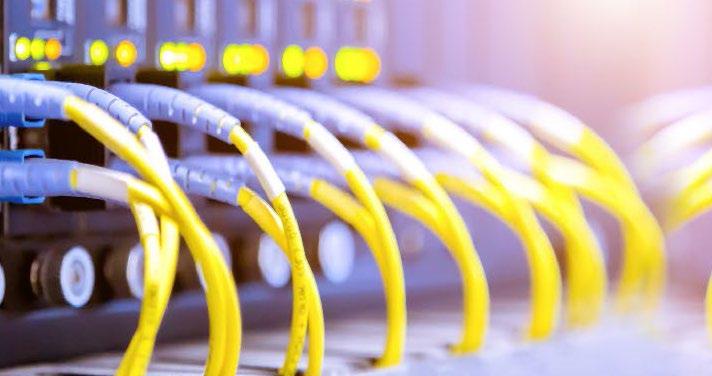
3 minute read
AS/CA S009 Revisions – Are You up to Date?
AS/CA S009 REVISIONS
ARE YOU UP TO DATE?
neCA ReCenTLY PReSenTeD An InFORMATIVe WeBInAR On THe AS/CA S009 ReVISIOnS. BeLOW IS A SuMMARY OF THe neW eneRGY CLASSIFICATIOnS AnD CABLInG DeFInITIOnS, PLuS A QuICK GLAnCe AT SOMe OF THe OTHeR CHAnGeS TO THe STAnDARD.
New Energy Classifications
The most significant change comes from the new energy classifications based on AS/nZS 62368.1:2018 Audio/ Video, Information and Communications Technology equipment.
Within the revised standard, there has been a shift away from the traditional concepts of safe extra low voltage, extra low voltage, low voltage and high voltage. The standard now uses the following terms: Electrical Energy Source Class 1 (ES1), which can be worked on by an ordinary person - a person who is neither a skilled person nor an instructed person, such as endusers and the general public. Electrical Energy Source Class 2 (ES2), which can be worked on by an instructed person - a person instructed or supervised by a Skilled Person as to energy sources and who can responsibly
use equipment safeguards and precautionary safeguards with respect to those energy sources. Electrical Energy Source Class 3 (ES3), which can be worked on by a skilled person - a person with the relevant education or experience to be able to identify hazards and to take appropriate actions to reduce the risks of injury to themselves and others. Within these classifications, for any voltage up to the voltage limit, there is no set limit for the current. Likewise for any current up to the current limit, there is no set limit for the voltage.
What does this mean?
The new standard doesn’t just cater for a typical AC/DC source, but a broader range of energy sources. When calculating the voltage and current limits, workers now need to consider how the energy is delivered, what combinations of AC/DC are used and what frequency is being used.
New Cabling Definitions
The revised standard has also introduced a number of new definitions as follows:
Generic Cabling: Cabling which meets the Cabling installation conformance requirements of a Cabling design document in the AS/nZS 11801 series or ISO/IeC 11801 series of standards.
Special Application
Cabling: a Cable that— (a) is intended to carry steadystate or change-of-state DC signals or AC signals less than 300 Hz between devices; (b) is a Cable intended to carry an industrial data signalling protocol, e.g. RS232 or RS485; (c) is intended for multidiscipline use; or (d) is a hybrid Cable. Movable Cabling: a section of fixed or concealed Cabling which is likely to be moved as part of—
(a) the use of the Cabling in a physically reasonable manner; (b) the use in a physically reasonable manner, or the normal automatic operation, of anything that the Cabling is fixed to, supported by or enclosed by; (c) an activity (other than Cabling Work or demolition of Cabling) which is— (i) commonly carried out at; and (ii) reasonable for; the type of location and type of Premises where the
Cabling is installed; or (d) a particular type of activity (other than Cabling Work or demolition of Cabling) which has been made known to the Cabling Provider, either expressly or by implication, as likely to occur at the location where the Cabling is installed.
More Changes at a Glance
Other changes to the standard include: new definitions for Registered engineers, ‘arm’s reach’ and Remote
Feeding Telecommunications (RFT) Circuits. new conductor size and temperature recommendations for generic cabling. new requirements for plug terminated cabling. updates to separation and subducting to cater for eS1, eS2 and eS3. updates for optical fibre system inspection apparatus, laser warning marking, safety and labelling. updates on cabling between buildings and surge suppression for paired conductors. new requirements for installing earth bars/terminals at distributors. Guidance on compatibility of 6P plugs and 8P sockets. Additional information on network boundaries for Fibre, HFC and wireless terminations. Guidance on FTTC connectivity.
To find out more about the key changes to AS/CA S009 and familiarise yourself with the new provisions, speak to your local neCA Branch.












